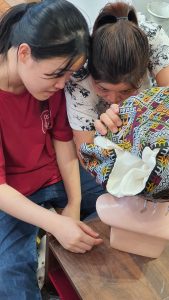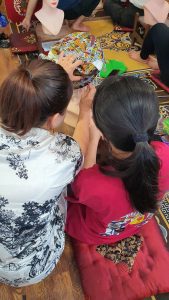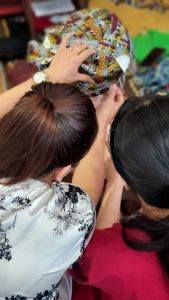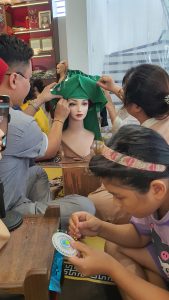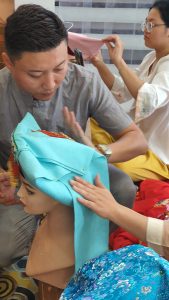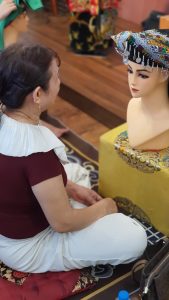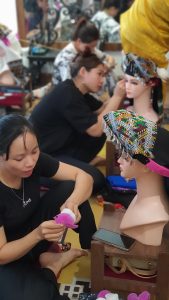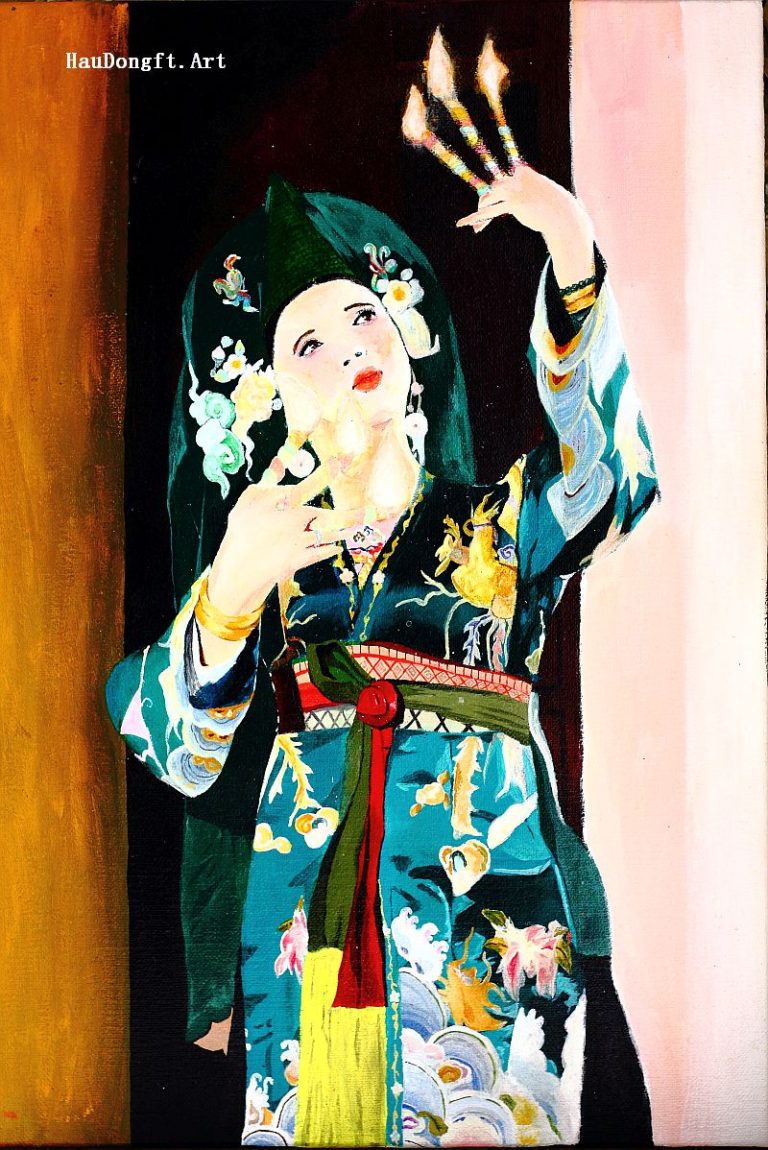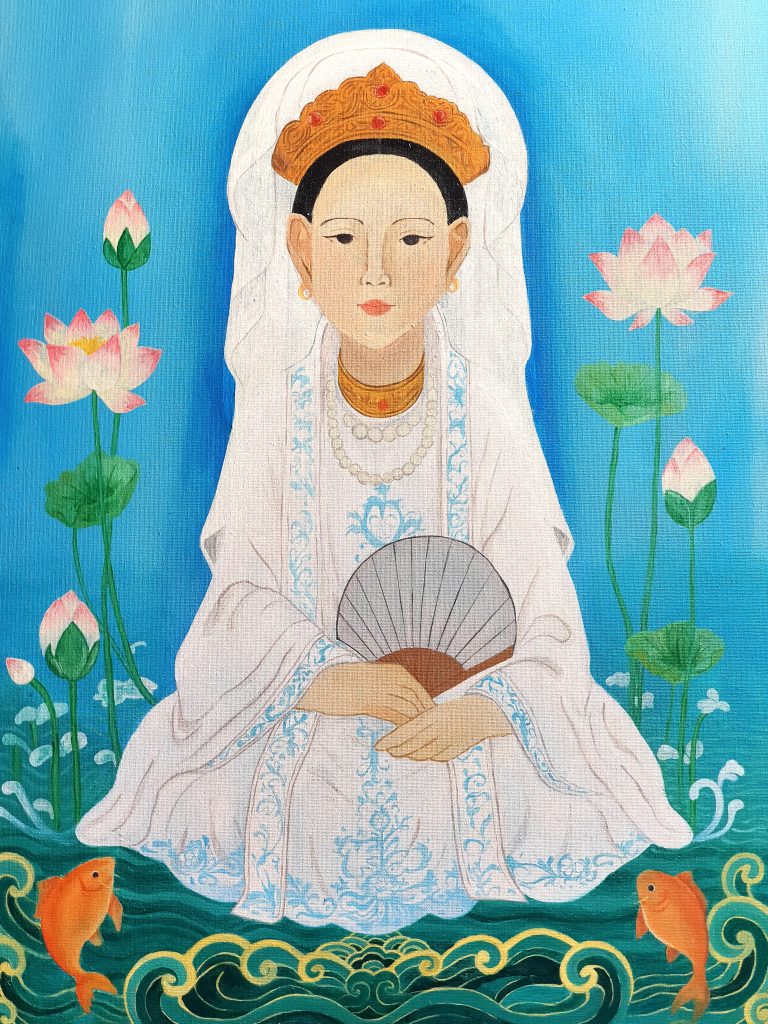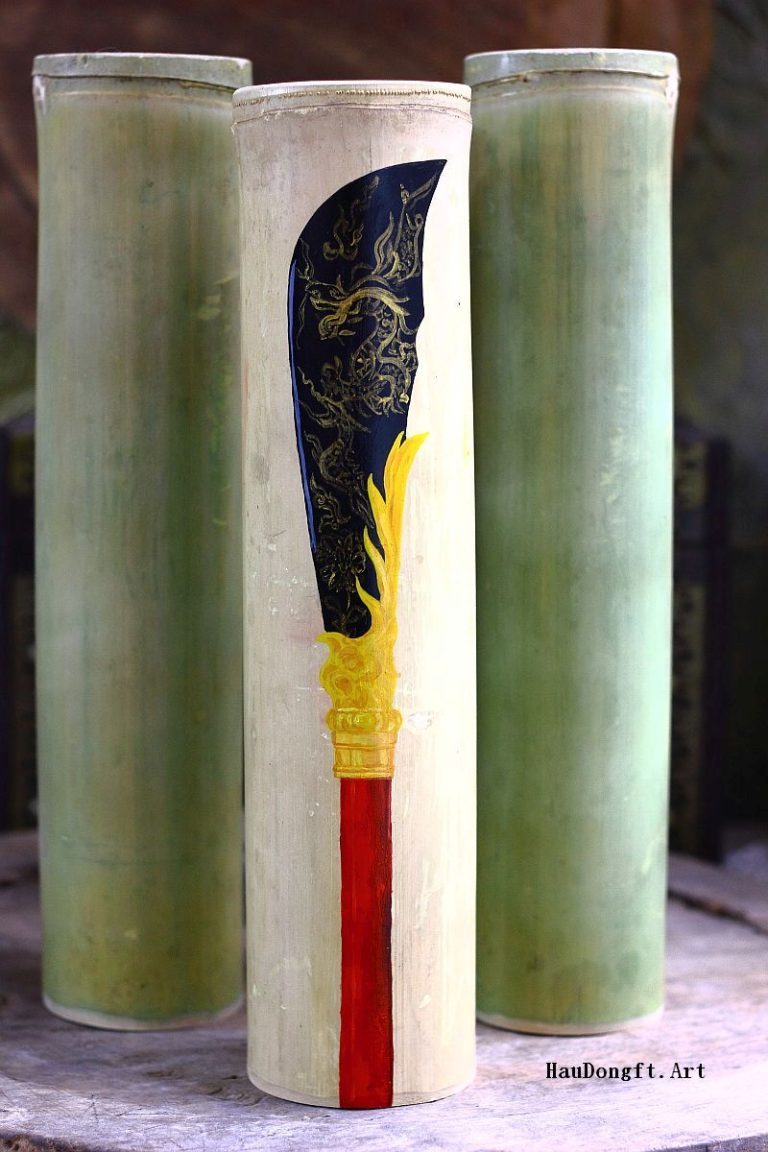During a recent workshop on preparing ritual costumes for hầu đồng, we had the chance to witness and practice the intricate art of folding and arranging khăn chầu—the ritual headdresses worn by mediums. What began as a hands-on experience soon unfolded into a deeper understanding of how these textiles embody history, symbolism, and spiritual devotion.
Types of Khăn Chầu
In hầu đồng, the headdress is not simply decorative. Each type of headdress carries specific meaning and is worn during particular ritual moments:
Khăn vành (round turban): A simple, circular turban, often black or red, symbolizing solemnity and grounding. Mediums wear it during the opening stages or less ornate rituals.
Khăn xếp (folded turban): Made by carefully folding fabric into even pleats, this style requires patience and precision. It emphasizes neatness, discipline, and respect.
Khăn phủ diện (face-covering veil): Richly decorated with embroidered sacred patterns, this veil is used when mediums embody deities of higher rank, enhancing their aura of grandeur.
Khăn lối (elaborate style): Often adorned with flowers, pins, and bright ornaments, khăn lối reflects creativity and divine beauty, used for spirits associated with grace and femininity.
Each type not only differentiates deities in the Mother Goddess pantheon but also establishes a visual and spiritual atmosphere, signaling shifts in the ritual flow.
-

-

-
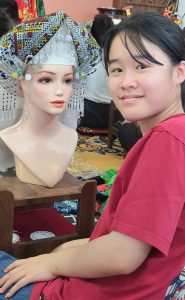
-
Bao Anh styling ritual scarf for a workshop
-
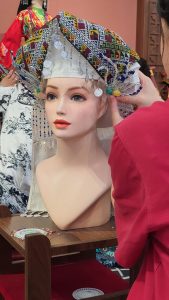
-
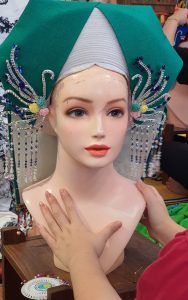
-
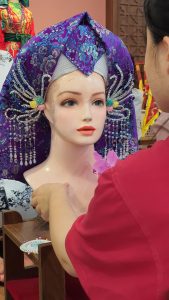
-
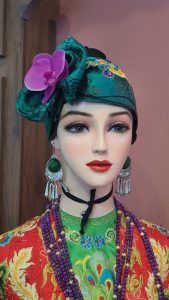
-

-

-
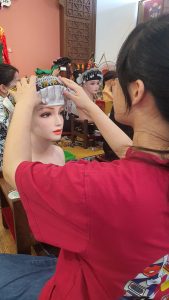
-
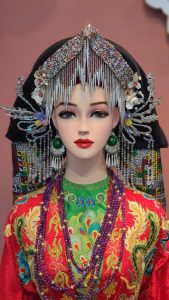
-
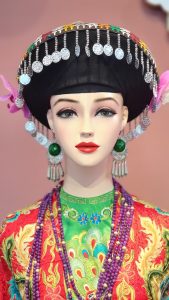
-
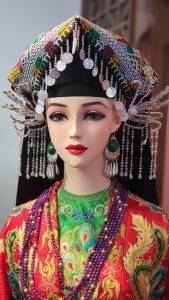
-

-
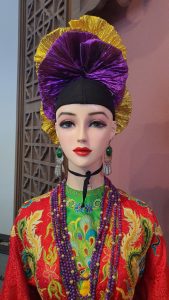
-
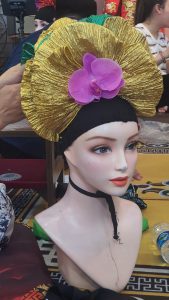
Symbolism and Ritual Value
The process of arranging a ritual headdress is itself a sacred act. Folding fabric, fixing pins, and placing flowers are not random aesthetic choices; they embody gestures of reverence. For example, vibrant colors like red, purple, and gold represent power, prosperity, and divine presence. Ornaments such as orchids, beads, or silver tassels are chosen not only for beauty but also for their associations with purity, fortune, or protection.
Mediums believe that the proper dressing of khăn ensures harmony between the human and the spirit world. A poorly tied khăn could be seen as disrespectful or inauspicious, while a carefully arranged one helps invite the deity with dignity.
Transmission of Knowledge
At the workshop, we realized that this craft is preserved not through books but through direct practice and mentorship. Experienced practitioners guided newcomers in folding techniques, correcting mistakes, and explaining symbolic details. Each adjustment—refolding a pleat, repositioning a flower—was an act of teaching as well as devotion.
Conclusion
The ritual headdresses in hầu đồng are far more than accessories. It is a textile language of faith, identity, and heritage. Every layer of fabric reflects centuries of cultural memory, while every flower or pin represents an offering of respect to the divine. Participating in the workshop revealed to me that behind the dazzling stage of hầu đồng lies a quiet world of meticulous preparation, where culture is preserved one fold of fabric at a time.


















